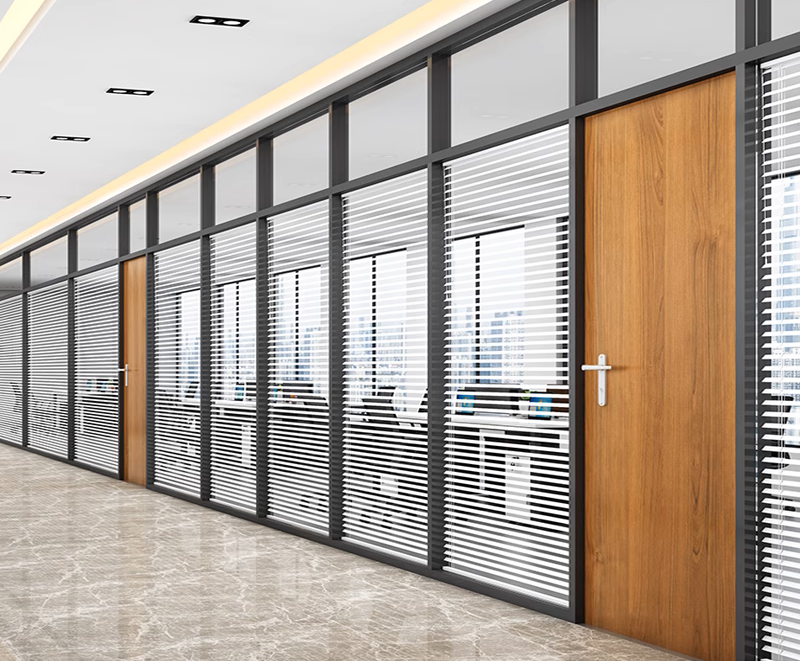In architectural interior design and office space partitioning, aluminium partitions have become the mainstream choice for shopping centres, office buildings, hotels and similar settings due to their lightweight, aesthetic appeal and ease of installation. However, despite aluminium’s natural oxide layer, it remains susceptible to corrosion, surface flaking and other issues in humid, high-salt-mist or highly polluted environments, compromising both service life and visual appeal. Recent industry practices demonstrate that scientifically applied surface treatments can fundamentally enhance corrosion resistance, extending product lifespan by 3-5 times. This has become a pivotal factor in the quality competition for aluminium partitions.
The Protective Logic of Surface Treatment: Blocking Corrosion Pathways is Key
The corrosion of aluminium partitions fundamentally stems from chemical reactions between the aluminium substrate and moisture, oxygen, and pollutants in the air, leading to surface oxidation and flaking. The core function of surface treatment is to form a dense, stable protective layer on the aluminium substrate through physical or chemical means, thereby blocking the contact pathway between corrosive agents and the base material.
Mainstream Surface Treatment Processes: Distinct Advantages for Diverse Applications
Three primary surface treatment techniques are currently prevalent in the aluminium partition industry, each exhibiting distinct corrosion resistance characteristics and suitability for specific scenarios, thereby providing tailored solutions for varied project requirements:
1. Anodic Treatment
Anodising employs electrolysis to generate a thicker, denser oxide film on the aluminium substrate surface. Compared to aluminium’s natural oxide layer, this significantly enhances corrosion resistance. The resulting oxide film bonds tightly to the substrate, resists peeling, and can be dyed in multiple colours, combining aesthetic appeal with fundamental protection.
1.Powder Coating
Powder coating involves uniformly applying electrostatic powder paint to the aluminium substrate surface, which is then cured at high temperatures to form a coating layer 60-120μm thick. The advantage of this process lies in its non-porous, fully covering protective layer that completely isolates corrosive agents. The coating resists acids, alkalis, and abrasion, effectively withstanding moisture erosion even in humid environments such as hotel bathrooms or shopping centre tea rooms.
3.Fluorocarbon Coating
Fluorocarbon coating employs fluororesin-based paints applied in multiple layers (typically primer, topcoat, and clearcoat) to form a protective layer. It exhibits exceptional weather resistance and corrosion resistance, withstanding extreme conditions including ultraviolet radiation, high temperatures, high humidity, and high salt fog exposure. Its coating withstands over 1,000 hours of salt spray testing without corrosion and boasts a service life exceeding 10 years. It is primarily employed in high-end commercial complexes, airports, laboratories, and other settings demanding exceptional corrosion resistance.
From arid office towers to humid coastal hotels, surface treatment technologies are tailoring bespoke protective solutions for aluminium partitions. This not only ensures long-term product durability but also provides robust support for architectural aesthetics and safety. For consumers and project stakeholders alike, scrutinising surface treatment processes has become a critical benchmark for assessing aluminium partition quality.
Contact info@gkbmgroup.com for further information regarding Gaoke Building Materials partition aluminium.
Post time: Sep-18-2025





